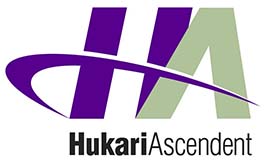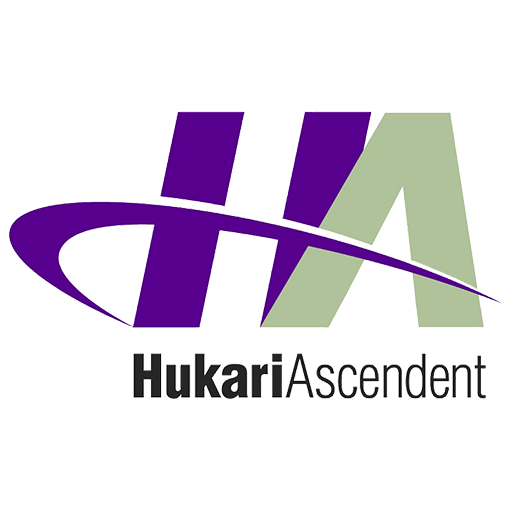Project Risk and Program Management
HukariAscendent has a proven track record as a provider of high quality professional and technical services. HukariAscendent has demonstrated these services in nuclear and commercial industries.
HukariAscendent has opportunities for all levels of employment within these services – entry, junior to senior. HukariAscendent provides in-house recruiting, staffing, program and project management, human resources, finance and accounting, and contract administration in support of several large staff augmentation contracts. HukariAscendent currently holds active contracts with several DOE Prime Contractors, providing a broad range of staff augmentation support, including, but not limited to:
Project Risk and Program Management
HukariAscendent has been supplying technical consulting and engineering service personnel since 1999 to government and commercial projects. HukariAscendent personnel have the experience and expertise to support nuclear projects from inception through construction, operation, and decomissioning. The company provides personnel overseeing multiple interrelated projects and activities that are aligned with an organization’s strategic objectives, focusing on coordinating resources, schedules, budgets, and tasks across various projects to ensure they collectively achieve the desired outcomes and benefits. Hukari personnel serve as program managers and in direct supporting roles to meet client needs.
Project Risk and Program Management – HukariAscendent provides support for all the key aspects of program management:
Definition and Planning: Program managers work with stakeholders to define the scope, objectives, and deliverables of the program. They develop a high-level plan that outlines the projects, timelines, dependencies, resource requirements, and risks.
Alignment with Strategy: Programs are typically initiated to achieve strategic goals or address specific business needs. Program managers ensure that all projects within the program are aligned with the organization’s overall strategy and priorities. The company has supported programs for decommissioning commercial power plants, implementing instrumentation and control system for nuclear plants, medical isotope production, government nuclear and industrial facilities and laboratories
Resource Management: Hukari has provided program managers responsible for allocating resources such as budget, personnel, and materials across different projects within the program, optimizing resource utilization to ensure efficient and effective delivery of outcomes for large nuclear projects as well as individual programs such as fire protection, criticality safety, margin management and engineering.
Risk Management: Program managers identify potential risks, assess their impact, and develop strategies to mitigate or respond to them. They also monitor risks throughout the program lifecycle and make adjustments as necessary. HukariAscendent had developed procedures, plans and training to support program risk management.
Risk Identification: The first step in risk management is identifying potential risks that could affect the project or organization. This involves brainstorming with stakeholders, reviewing historical data from similar projects, conducting risk assessments, and utilizing risk identification techniques such as SWOT analysis (Strengths, Weaknesses, Opportunities, Threats) or risk workshops. In addition to program risk, HukariAscendent has significant expertise in understanding and evaluating technical risk associated with complex nuclear projects.
Risk Assessment: Risk assessment involves analyzing each risk in terms of its probability of occurrence and the magnitude of its consequences. Risks can be categorized based on their severity and urgency. We have experience with risk management modeling tools, software, and methodologies to evaluate diverse and complex program risk.
Risk Prioritization: Not all risks are equal; some may have a more significant impact on the project or organization than others. Risk prioritization involves ranking risks based on their likelihood and potential impact, as well as considering other factors such as time constraints and resource availability. This helps in focusing resources and attention on managing the most critical risks.
Risk Mitigation: After prioritizing risks, the next step is to develop strategies to mitigate or reduce their impact if realized. This could involve implementing preventive measures to reduce the likelihood of occurrence, such as improving processes or adding safeguards. It could also involve developing contingency plans to minimize the consequences of risks that cannot be entirely eliminated.
Risk Monitoring and Control:
Risk Communication: Effective communication is essential in risk management to ensure that all stakeholders are aware of potential risks, their potential impacts, and the strategies in place to mitigate them. This includes regular reporting on risk status, facilitating discussions on risk-related issues, and ensuring that risk information is shared transparently and appropriately.
Risk Response Planning: In addition to mitigation strategies, it’s crucial to have plans in place for responding to risks if they materialize. This may involve predefined actions to address specific scenarios, such as activating backup systems, reallocating resources, or escalating issues to higher management.
Documentation and Lessons Learned: Throughout the risk management process, it’s essential to maintain documentation of all identified risks, their assessments, mitigation strategies, and outcomes. This information not only helps in managing current risks but also provides valuable insights for future projects or organizational initiatives.
Communication and Stakeholder Management: Effective communication is critical in program management. Program managers engage with various stakeholders, including executives, project managers, team members, and external partners, to provide updates, address concerns, and ensure alignment with expectations.
Monitoring and Control: Program managers track the progress of individual projects within the program and assess their performance against predefined metrics and milestones. They intervene when necessary to address issues, reallocate resources, or adjust plans to keep the program on track.
Benefits Realization: Ultimately, the success of a program is measured by the value it delivers to the organization. Program managers focus on ensuring that the intended benefits are achieved, whether they are financial gains, operational improvements, or strategic advancements.
Closure and Evaluation: Once the program objectives have been met, program managers oversee the closure of projects, documentation of lessons learned, and evaluation of the overall program performance. This information is valuable for future initiatives and organizational learning.
Our resource base includes personnel who can support successful, timely interaction with program and project staff at all levels. Related experience of our resources includes development of program and project management plans, risk ranking methodologies, development of procedures, plans, training, schedules, budgets, and risk management and risk mitigation plans.
Project Risk and Program Management Products – Examples of typical work products include:
- Program Management Plan
- Key Performance Indicators
- Integrated Schedule
- Work Breakdown Structure
- Schedule of Value
- Variance Analysis
- Budget
- Risk Management Plan
- Risk Register
- Risk Mitigation Plan
- Risk Assessment
By the numbers:
- Executed 11 contracts for Project Risk and Program Management services.
- Performed more than $124M in Project Risk and Program Management contracts for 11 companies.
- Performed Project Risk and Program Management services at 10 sites/projects.
- Have 23 years providing Project Risk and Program Management services.
- Project Risk and Program Management employees average 25 years’ experience.
HukariAscendent is an Equal Opportunity/Affirmative Action Employer. All qualified applicants receive consideration for employment without regard to age, disability, race, color, religion, creed, national origin, sex, marital status, sexual orientation, veteran or military status including disabled veterans and Vietnam era veterans, or other protected status.
HukariAscendent maintains a drug-free workplace.
For questions or if you need accommodation in the application process, please contact HukariAscendent Recruiting at (303) 384-9079.

